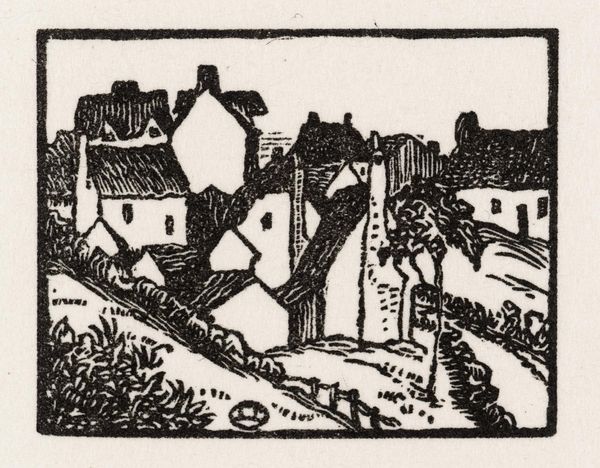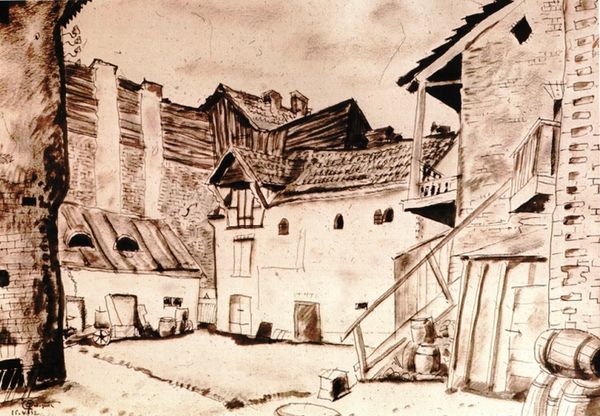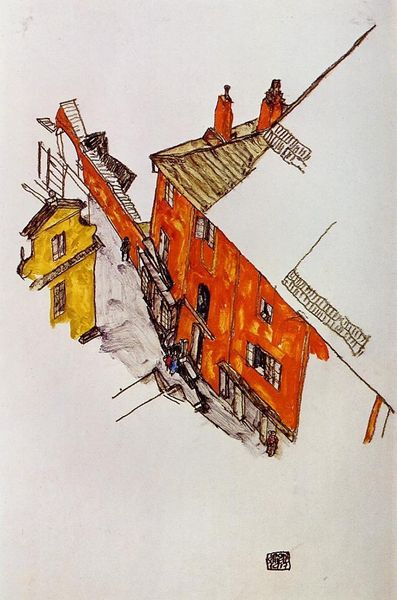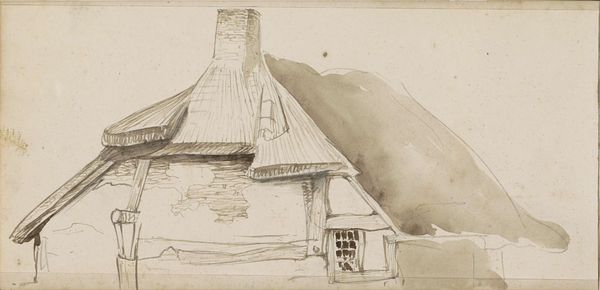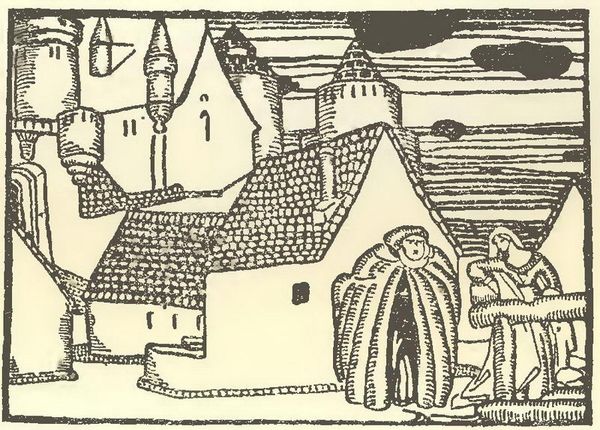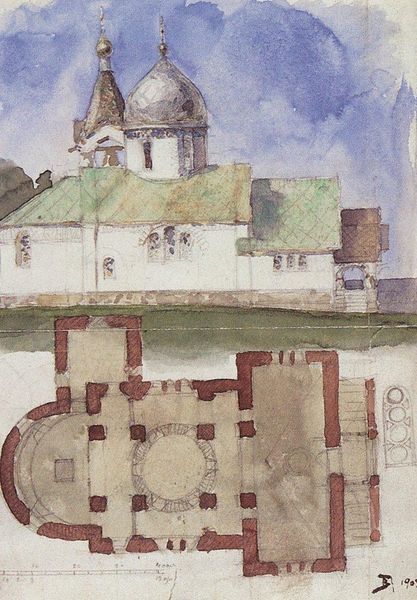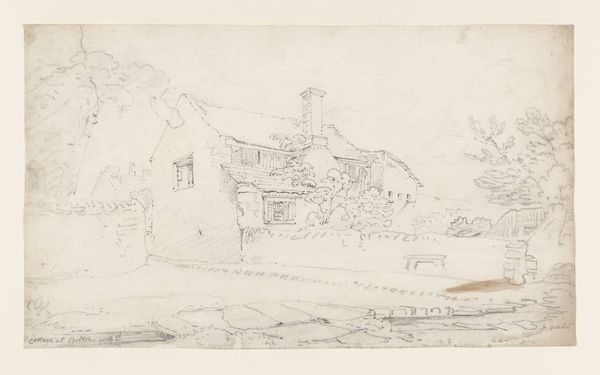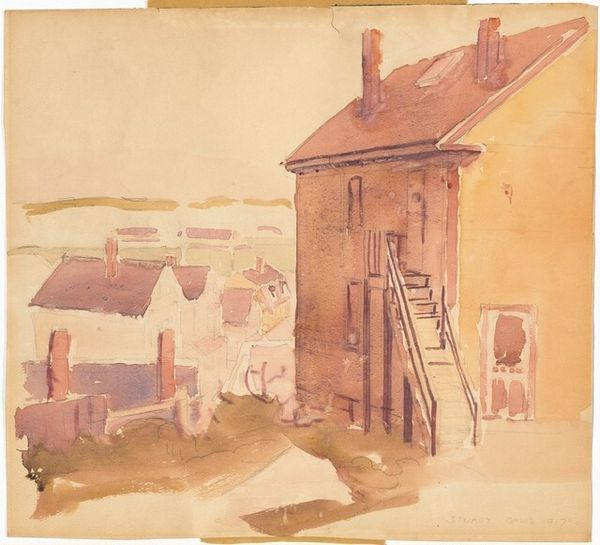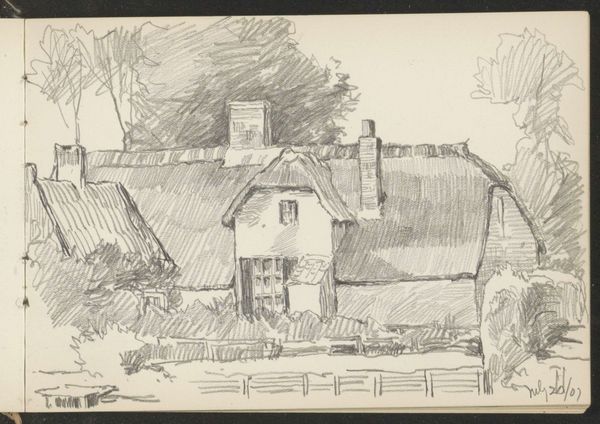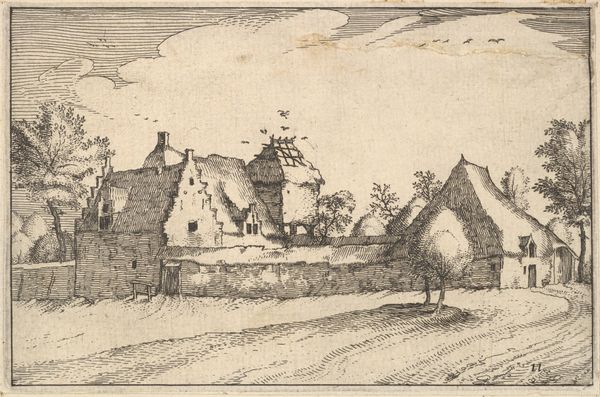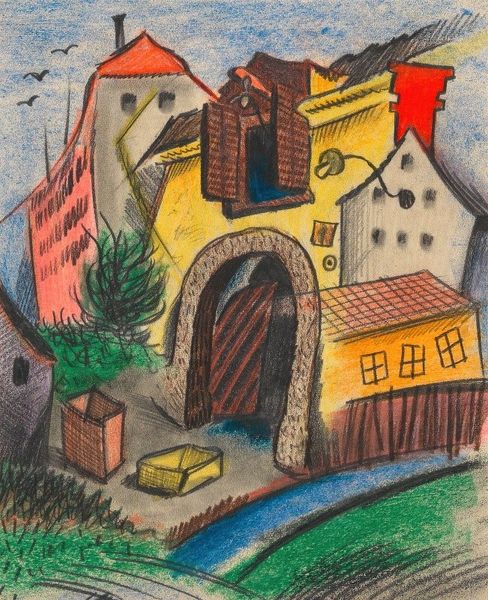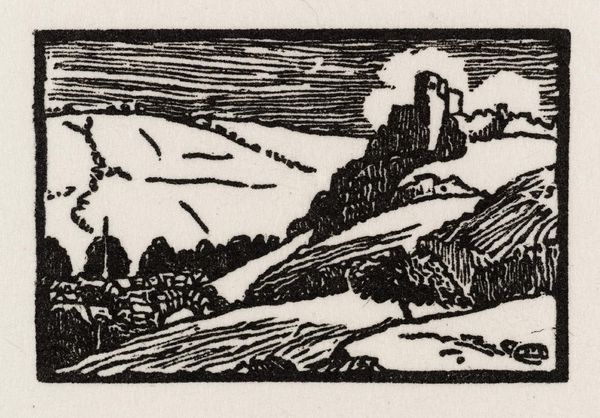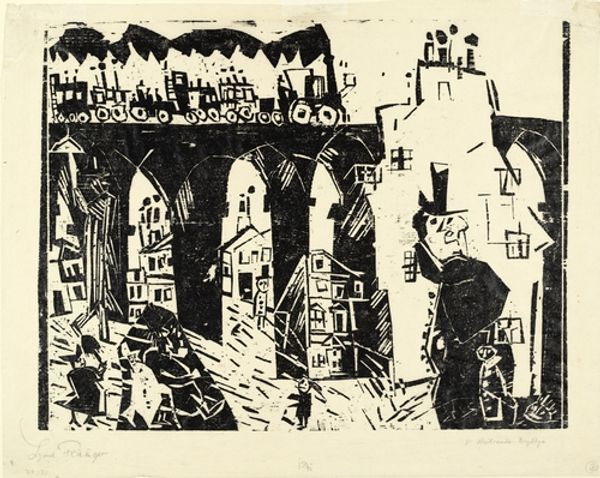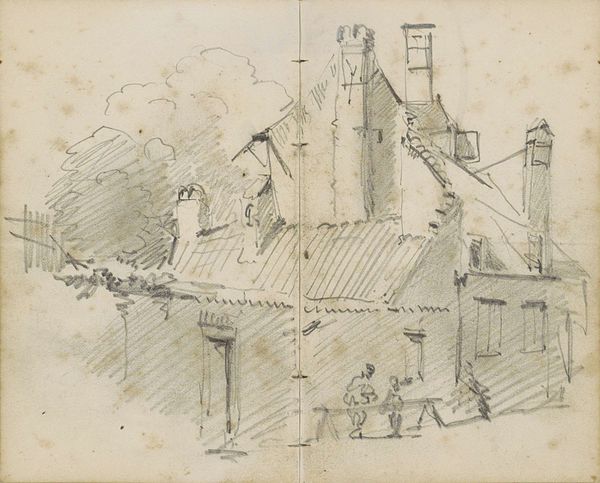
painting, watercolor
#
painting
#
landscape
#
oil painting
#
watercolor
#
coloured pencil
#
cityscape
#
watercolour illustration
#
watercolor
Dimensions: 22 x 28 cm
Copyright: Public domain US
Curator: David Kakabadzé created this watercolor painting, "Bretagne," in 1921. It currently resides in a private collection. Editor: My initial impression is one of gentle melancholy. The subdued colors and the slightly wavering lines suggest a dreamlike remembrance of a place, or perhaps even a fading sense of home. Curator: It is interesting you mention "home." Kakabadzé painted this while living in Paris, during a period when many Georgian artists sought opportunities in Western Europe. Bretagne, a region in France with its distinct culture and visual identity, may have represented a longing for his own homeland while engaging with European modernist movements. Editor: Indeed. The chimney billowing what looks almost like watercolor smoke seems almost like a collective memory. It anchors the scene but feels ethereal. What strikes me most is the symbolic use of water. The fluid medium, watercolor, captures the mutable and transient nature of both memory and cultural identity. Curator: Precisely! His choice of a quaint, possibly working-class locale speaks volumes. It challenges the then-dominant narratives around the avant-garde centered in major cities. Editor: The simplification of forms borders on the iconic. See the houses almost as minimalist shapes of childhood drawings? This isn't a documentary approach; rather it is sifting through a collection of symbols, choosing which ones resonated the most deeply. Curator: And while he was experimenting with modernist idioms at the time, there’s a conscious effort to distance himself from overt political statements. By depicting the French countryside rather than scenes from Georgian turmoil, he's engaging in a more subtle, personal form of cultural commentary. Editor: Yes. A personal meditation couched in widely resonant, instantly legible images. What appear initially as plain homes carry an emotional density, as these symbols speak to themes of cultural uprooting and resilience. Curator: Looking closer at the cultural crosscurrents embedded in Kakabadzé’s practice helps us avoid flattening artists into single boxes or schools. Editor: For me, “Bretagne” becomes much more than just a geographical scene; it transforms into a testament of cultural memory shaped by emotion and longing.
Comments
No comments
Be the first to comment and join the conversation on the ultimate creative platform.
